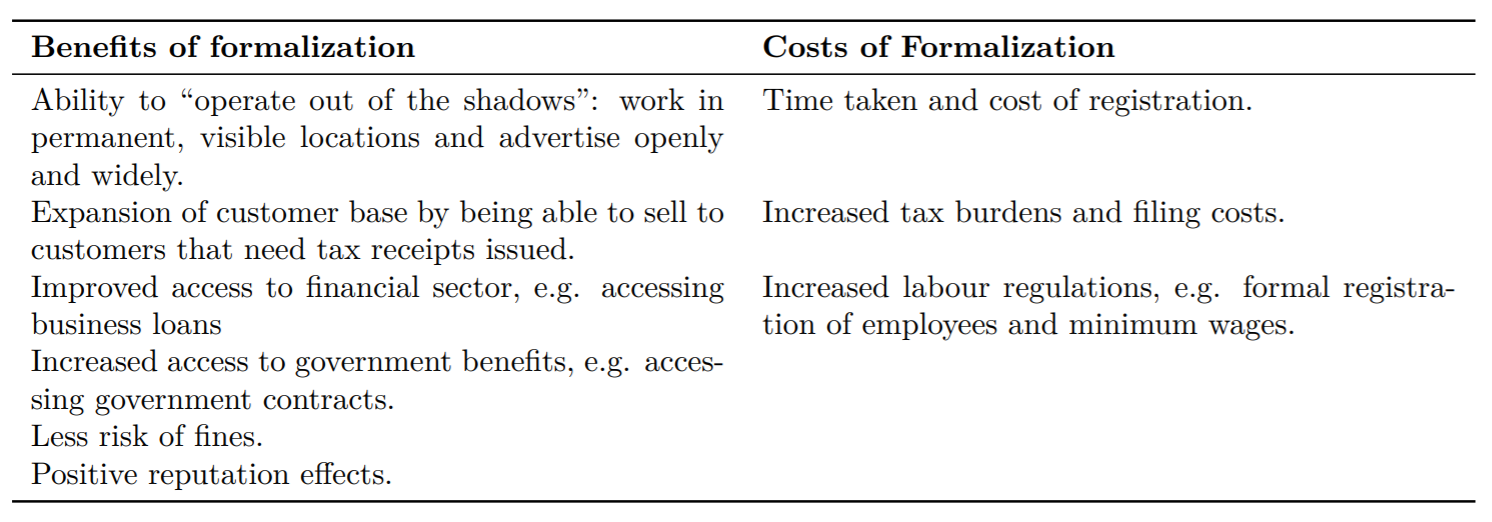Simple comparisons of formal and informal firms reveal that formal firms are more productive and profitable. For example, a series of often-cited studies by the McKinsey Global Institute compare the operations of formal and informal firms in several countries and conclude that informality has a negative impact on productivity. The gap is large enough to account for nearly 50 percent of the overall productivity gap between countries such as Portugal and Turkey on the one hand and the United States on the other (Farrell, 2004). La Porta and Schleifer (2008) also find that formal firms tend to have substantially higher productivity than informal firms.
But does this correlation reflect the true causal effect of formalisation on performance, or is it due to some pre-existing differences in the performance of firms that chose to formalise and those that chose not to? Simple comparisons are complicated by the fact that firms actively choose whether or not to be formal. If firms consider all the potential costs and benefits of formalisation, some of which are outlined in Box 1, then the more productive firm owners, who expect larger benefits to becoming formal, are more likely to formalise. In contrast, individuals who see less benefit from formalisation (such as those whose firms are smaller and less productive) are more likely to choose to stay informal. The presence of this kind of selection, complicates the interpretation of the data. We cannot conclude anything about the effect of formalisation on productivity from a simple comparison of firms that chose to formalise and those that do not. In particular, the observed positive correlation between formality and performance will overstate the benefits of formalising for firm performance, because it conflates any actual causal effect of formalisation with a selection effect that reflects that those individuals who chose to formalise have fundamentally higher productivity, irrespective of the direct benefits of formalisation.
In order to have a more accurate (“unbiased”) measure of the causal effect of formalisation on productivity, an ideal experiment would randomly choose to make some informal firms formal and leave an otherwise identical group of firms informal. We could then compare the outcomes for the two groups and infer a causal effect of formalisation. This approach, known as a randomised evaluation, has become popular in development economics in recent years, and has been used in a number of studies on informality, many of which we discuss in this report. We also discuss studies using non-experimental methods that attempt to measure the causal effect of an intervention, although these methods rely on stronger assumptions to control for the self-selection of firms into formal or informal status.
Table 1: Potential benefits and costs of formalisation




